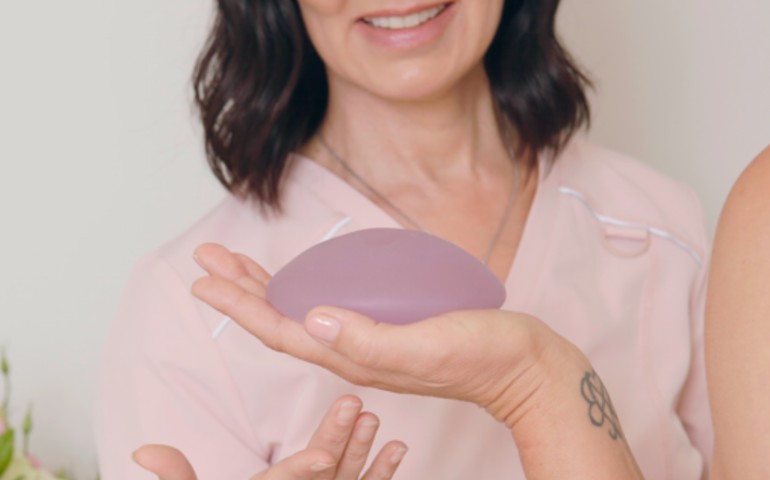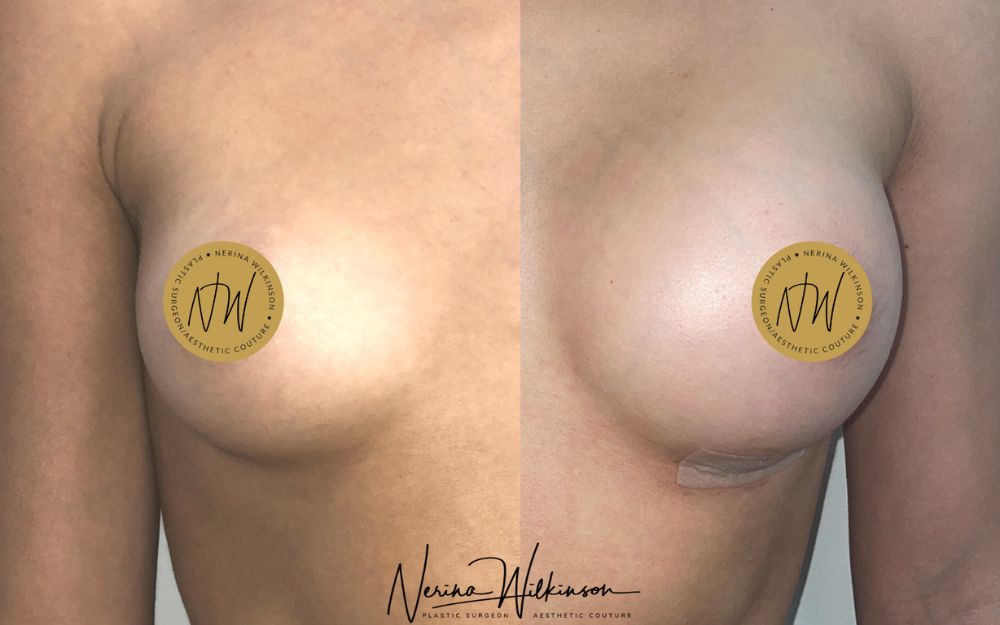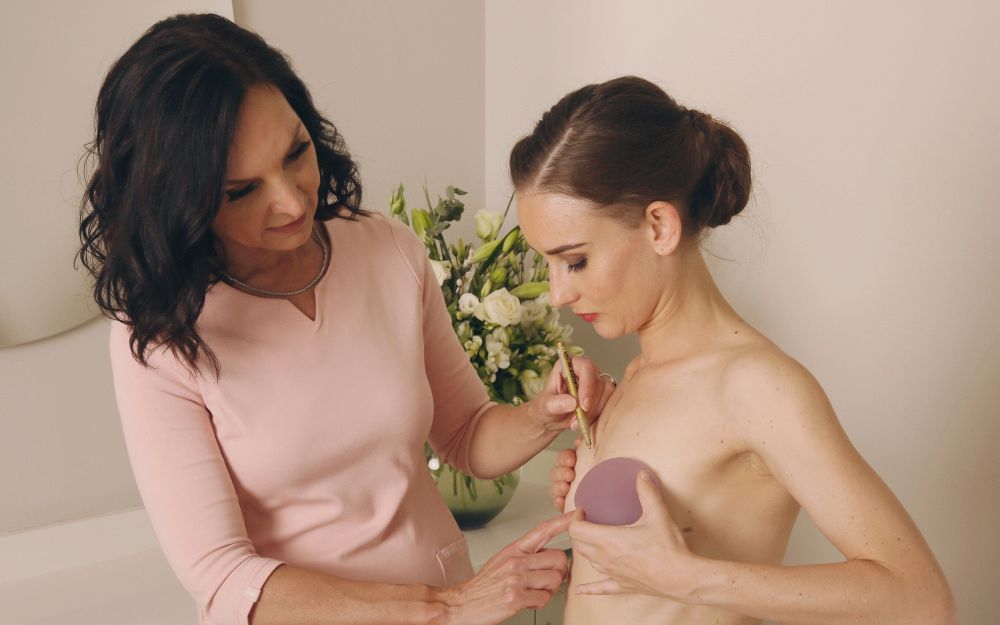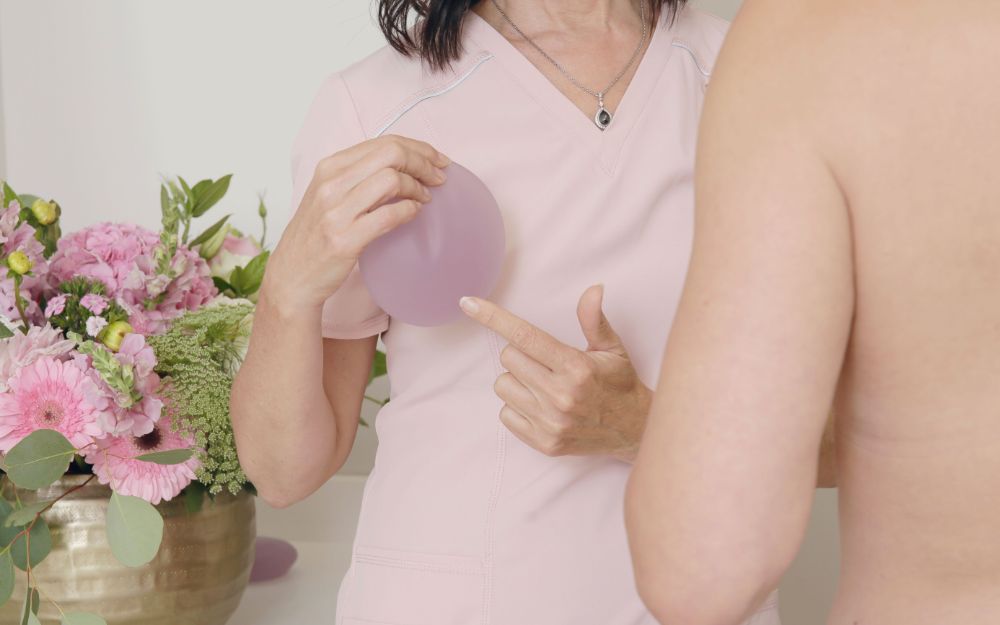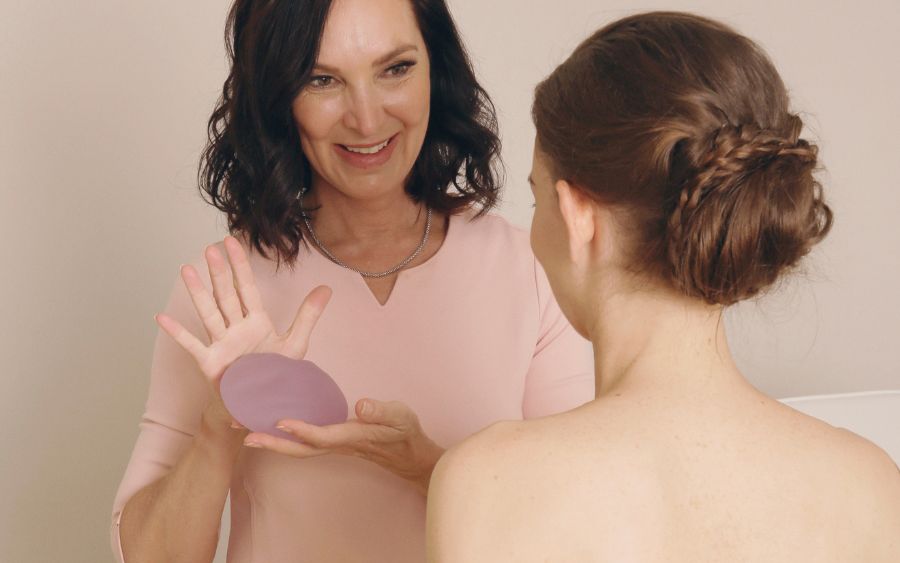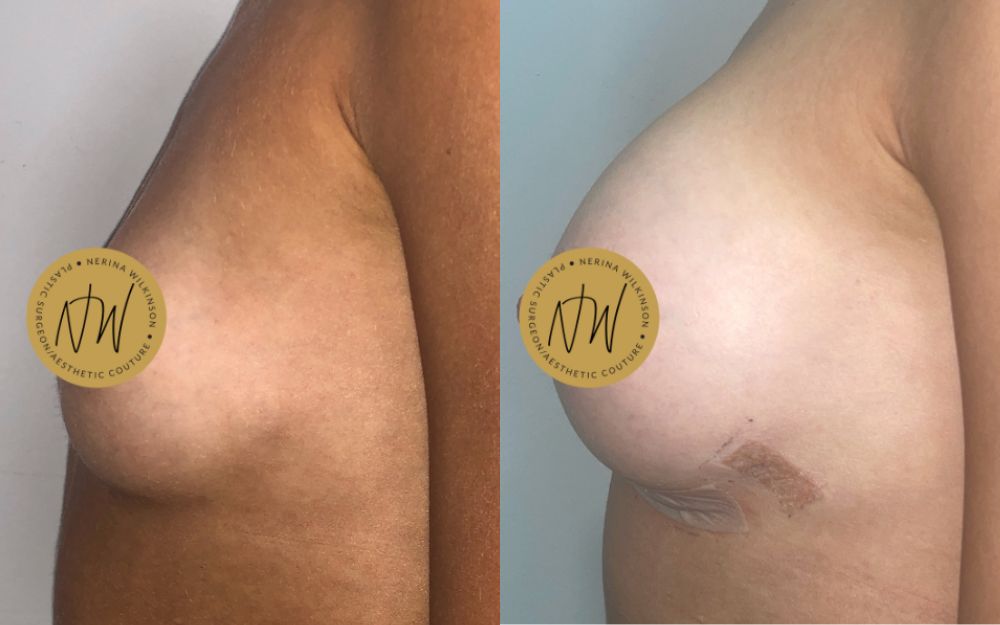written by Dr. Nerina Wilkinson MBChB (Stell) M.MedFC PLAST (SA)
Welcome to our comprehensive exploration through the delicate realm of cosmetic enhancements, with a spotlight on breast implants, a pivotal part of cosmetic breast surgery.
This procedure, aimed at augmenting the size and shape of the breasts, has been a haven for many seeking to boost their self-confidence and attain a desired aesthetic appeal.
In this blog, we shall delve into an all-encompassing scrutiny of breast implants, shedding light on the various types of implants available, benefits, risks, safety, and alternative options for breast enhancement.
With a thorough understanding, one can make informed decisions towards embracing this transformative journey. You can also arrange a personalised consultation with our cosmetic surgery specialists to discuss your unique concerns.
Table of contents
- Introduction to breast implants
- Benefits of breast implants
- Types of breast implants for tailored transformation
- Overview of the safety of breast implants and their complications</a
- Alternatives to breast implants for breast enhancement
- Final thoughts about breast implants
Introduction to breast implants
Breast implants are a cornerstone in the field of cosmetic breast surgery, opening avenues for individuals aspiring for enhanced or reconstructed breast aesthetics.
In the following sections, we’ll delve into what a breast implant precisely is, the compelling reasons for considering breast augmentation surgery, and the progressive journey of breast implant technology.
Our aim is to equip you with a robust understanding, aiding you in navigating the complex yet transformative realm of breast augmentation (mammoplasty), thus enabling you to make informed decisions towards achieving your desired breast enhancement.
What is a breast implant?
A breast implant is a prosthesis used in breast augmentation procedures to enhance the size and shape of a person’s breasts, thus achieving a fuller contour. This form of breast enhancement is a popular choice among individuals seeking a more balanced figure or a reconstructive solution following mastectomy. Breast implants are silicone shells filled with either silicone gel or saline (salt water) which are placed under the breast tissue or chest muscles.
Think of breast implants as a means to attain a desired aesthetic or to reclaim a sense of wholeness post-surgery. They play a significant role in boosting self-esteem and body image. The journey towards breast augmentation encompasses understanding the types of implants, the surgical procedure, and the subsequent care required to maintain the desired outcomes. Through breast enhancement, individuals can achieve a body image that mirrors their ideal self, thus navigating the world with renewed confidence and self-assurance.
Reasons for selecting breast implants for breast enlargement or enhancement
Opting for breast implants is a deeply personal choice, driven by various factors unique to each individual. This method of breast augmentation provides a route to attain a fuller, balanced contour, potentially boosting self-esteem and body positivity. Here are common reasons individuals consider this procedure:
- Restoring breast volume post-pregnancy or significant weight loss.
- Reconstructive needs post-mastectomy.
- Achieving a desired aesthetic appearance.
- Correcting asymmetrical breasts.
With modern advancements in implant technology, individuals can expect safer and more natural-feeling results. The array of implant types and improved surgical techniques cater to diverse needs, making breast enhancement a viable option for many seeking to improve their body image and self-confidence.
Evolution of the breast implant
The evolution of the breast implant is a testament to medical innovation aimed at fulfilling the desire for enhanced body aesthetics and reconstructive needs. Initially, the journey began in the early 20th century with rudimentary procedures that had mixed success.
The modern era of breast augmentation took a significant turn in 1962 with the introduction of the first silicone gel-filled implant. This marked the start of safer and more effective breast enhancement options. Over the decades, continuous advancements have been made in both saline and silicone implants, enhancing their safety, feel, and appearance. The refinement in surgical techniques and implant materials has expanded the possibilities for individuals seeking breast augmentation, whether for cosmetic or reconstructive purposes.
The ever-evolving realm of breast implants continues to adapt, aimed at meeting diverse needs while prioritising safety and patient satisfaction. This continual advancement echoes the medical community’s commitment to refining breast augmentation procedures, aligning them closer to the aspirational ideals of individuals.
Benefits of breast implants
Breast implants are more than a mere avenue for physical transformation; they are a gateway to a renewed sense of self. With advancements in medical technology, they now promise safer and more natural-looking outcomes.
Let’s delve into some of the benefits achieved by breast implants.
Enhanced aesthetic appeal
Breast implants assist in achieving a more desirable and voluptuous breast contour, aligning with personal aesthetic aspirations. Whether it’s about restoring lost volume post-pregnancy or merely desiring a fuller look, breast implants cater to these cosmetic endeavors efficiently.
Correction of asymmetrical breasts
Breast asymmetry is a common concern. Breast implants offer a balanced and symmetrical breast appearance, rectifying the disparities in size and shape between the two breasts.
Long-lasting results
With a relatively long lifespan, breast implants offer great long-term results. Though they might require eventual replacement, the prolonged periods of satisfaction they provide make them a worthy investment in one’s body image and self-assurance.
Through these assorted benefits, breast implants pave the way towards not just an enhanced physical appearance but also a journey of self-discovery and affirmation.
Elevated self-esteem
A well-contoured bust often translates to boosted self-esteem and body positivity. The newfound confidence can profoundly impact interpersonal relationships and daily interactions, empowering patients to live unapologetically.
Reconstructive benefits post-mastectomy
Breast implants provide an effective solution for women seeking reconstruction post-mastectomy. By restoring a natural appearance, they aid in the emotional healing process, marking a significant step towards recovery.
Types of breast implants for tailored transformation
There are various types of breast implants, each tailored to meet individual aesthetic or reconstructive desires. This section will walk you through the diverse types of silicone implants and others, assisting you in making an enlightened choice toward attaining your desired breast contour and feel.
The primary categories encompass saline, gummy bear, and silicone implants with each differing in material, consistency, and shape.
Additionally, the realm of implants extends to smooth, round, and textured varieties, further personalising the breast augmentation journey. We also touch upon different brands of implants, enriching your understanding of the available options.
Grasping the distinct features and advantages of each type is pivotal for anyone considering a path toward breast augmentation.
Silicone breast implants
Silicone breast implants, known for their natural feel, consist of a silicone outer shell filled with cohesive silicone gel, mimicking the texture of human fat.
Modern enhancements have reduced the likelihood of rupture due to the improved quality of the silicone outer shell and the cohesive nature of the inner gel. In rare rupture cases, the gel typically stays within the body’s protective capsule around the implant, minimising risks.
However, severe instances may lead to “capsular contracture,” causing pain and breast hardening. Despite occasional asymptomatic ruptures detected during routine screenings, silicone breast implants remain a popular, safe choice for those seeking breast augmentation, offering a balance of aesthetic appeal and reassurance.
Saline implants
Saline implants, a notable type within the realm of breast augmentation, possess an outer silicone shell, yet diverge from silicone implants by housing a saline solution instead. These saline-filled implants carry the advantage of safety in the event of rupture, as the saline solution can be effortlessly absorbed and excreted by the body.
Despite this advantage, we often steer patients away from saline implants. Their tendency to rupture or deflate prematurely, alongside a less natural appearance and feel, often culminates in less satisfaction.
Moreover, they are more prone to visible wrinkling compared to other implant types. Through this discourse, the intention is to present a balanced view, aiding you in making an educated decision when pondering over saline implants as an option for breast augmentation.
Gummy bear implants (gel-based)
Gummy bear implants stand out in the landscape of breast augmentation owing to their unique composition and structure. Unlike their saline and silicone counterparts, these implants maintain their shape even when the outer shell is broken, courtesy of their cohesive gel content which is thicker than traditional silicone gel. This feature significantly reduces the risks associated with leakage.
However, it’s essential to note that while gummy bear implants offer a more natural look and feel alongside a lower likelihood of rippling, they require a slightly larger incision for placement due to their firmer texture. Moreover, there’s a possibility of the implant rotating, which could lead to an unnatural appearance if not corrected timely. The discourse around gummy bear implants presents a blend of advantages and considerations, aiming to provide a comprehensive view for individuals exploring breast augmentation options.
Smooth, round, and textured implants
Navigating through the array of breast implant choices, individuals encounter smooth, round, and textured implants, each with distinctive traits.
Smooth implants, known for their soft texture, offer a natural movement which many find appealing. On the flip side, they might have a slightly higher chance of rippling.
Round implants are lauded for their ability to provide a fuller shape, especially at the top of the breast, creating a buoyant aesthetic. Their symmetry ensures that even if they rotate, the shape remains unaffected, maintaining the desired appearance.
Textured implants introduce a unique surface that adheres to the surrounding tissue, minimising the risk of implant rotation. This adherence supports the stability of the implant position over time, which is particularly beneficial in anatomically shaped implants.
In summary, the discourse around smooth, round, and textured implants provides an expansive view, aiding individuals in deciphering which implant type aligns well with their aesthetic or reconstructive goals in breast augmentation.
By understanding the distinct features and potential outcomes associated with textured, smooth, and round implants, individuals are better poised to make enlightened decisions on their journey toward breast enhancement.
Breast implants to avoid for safety reasons
Choosing the right type of breast implant is crucial to ensure not only the desired aesthetic outcome but also long-term safety and satisfaction. However, there are certain types of implants that have been associated with significant concerns and are advisable to avoid:
- PIP (Poly Implant Prothèse) Implants: Known for containing industrial-grade silicone unapproved for medical use, leading to higher rupture rates An alert by the MHRA (Medicine and Healthcare products Regulatory Agency) was issued in 2010.
- Certain Textured Implants: Some textured varieties, like those from Allergan, have been linked to Breast Implant-Associated Anaplastic Large Cell Lymphoma (BIA-ALCL).
- Implants Lacking FDA Approval: Those that haven’t secured approval from reputable health agencies may not meet critical safety and efficacy standards.
- Counterfeit or Off-Brand Implants: Sourced from unrecognisable or illegitimate manufacturers, these could pose significant health risks.
- Expired Implants: Past their expiration date, the integrity and safety of these implants are compromised.
Implants from Companies with No Long-Term Data: The absence of long-term safety and efficacy data makes these implants a risky choice.
The onus is on individuals to perform diligent research and consult with seasoned medical professionals to navigate the various breast implant options. Steering clear of these risky implants and opting for FDA-approved, reputable brands will significantly mitigate potential health risks and contribute to a more satisfactory breast augmentation outcome.
How do I pick the right breast implants?
Choosing the right breast implants is a nuanced process, grounded in personal aesthetic goals, physical anatomy, and the guidance of a board-certified plastic surgeon.
The journey towards breast augmentation begins with understanding the distinct types of implants available—saline, silicone, and gummy bear—each bearing unique properties in material, consistency, and shape.
Engaging in a candid discussion with your plastic surgeon is instrumental in navigating this decision. They can provide expert insight on how different implants may align with your expectations and lifestyle, ensuring a satisfactory outcome.
Reflecting on factors like the desired breast size, shape, and feel, along with considering the potential risks and the longevity of different implants, will steer you closer to making an informed choice that is ultimately the safest and most suitable solution for you.
Overview of the safety of breast implants, complications, and monitoring
Navigating the domain of breast augmentation requires a keen understanding of the associated safety measures and potential risks.
In this section, we shed light on the safety of breast implants, empowering you to make informed decisions, and our post on the safety, longevity, and replacement of breast implants explores this subject in more detail.
The objective is to provide a clear landscape of what one should know about breast augmentation, ensuring the journey is transparent and tailored to meet individual expectations while prioritising health and safety.
Are modern breast implants safe?
We strongly believe that the breast implants we use today are safe and reliable due to the continuous research worldwide with major advances in breast implant technology.
Currently, there is no apparent association between silicone gel-filled implants and connective tissue disease, breast cancer, or reproductive problems.
All other women with breast implants should feel safe with their devices.
When discussing breast cancer risks with my patients, we inform them that women with augmentations have less breast cancer than those without.
Many studies have proven that women with breast implants tend to have 30% less regular breast cancer than statistically expected. If they do get breast cancer, their survival rate is 30% higher than the survival rate of women without implants. The reason is probably that breast augmentation patients’ breasts will be more carefully monitored and any abnormalities picked up early.
Typical risks and complications associated with breast implants
Embarking on a breast augmentation journey requires a well-informed understanding of both the potential benefits and challenges. Some of the typical complications associated with breast implants include:
- Capsular Contracture: A hard shell forms around the implant, often causing discomfort or changes in appearance.
- Implant Rupture: Implant leakage or collapse of the implant material.
- Wrinkling: Visible folds or ripples on the skin covering the implant.
- Asymmetry: Uneven appearance or positioning of implants.
- Scarring: Prominent scar formation post-surgery.
- Pain: Persistent discomfort or soreness around the implant area.
- Infections: Rare but serious issues that require prompt medical intervention.
Being cognizant of these complications, discussing them openly with a board-certified plastic surgeon, and following post-operative instructions diligently can contribute to a safer and more satisfying breast augmentation experience.
How should I monitor my breast implants to prevent problems?
We suggest that all patients see their plastic surgeon once a year. Self-examination is highly recommended and immediate consultation is necessary if their breasts change in size or shape or develop lumps.
The longer a woman has breast implants, the more likely she is to experience local complications or adverse reactions. Women need to monitor their breasts for the rest of their lives.
Can breast implants interfere with routine mammoplasty, MRIs, and other scans?
It is possible that a breast implant could interfere with a mammogram. It is therefore extremely important to tell the radiographer of your implants so that they can use the appropriate screening technique.
Be aware of using a radiology centre that has experience in the special techniques required to obtain reliable results for breasts with implantation.
Mammograms can detect extra-capsular silicone when an implant ruptures but they do not detect intra-capsular ruptures. The relative value of ultrasound alone to detect intra-capsular rupture is controversial because its accuracy depends on the skill of the ultrasound technologist, the equipment used, and the experience of the interpreting physician.
MRI continues to be the most effective method of detecting silent (asymptomatic) rupture. The FDA currently recommends that women get their first breast MRI – 3 years after they receive their implants and every 2 years thereafter to detect silent rupture.
Alternatives to breast implants for breast enhancement
Breast implants are quintessential in the realm of cosmetic breast surgery, yet they are not the only path towards achieving a refined breast aesthetic.
There are other surgical procedures like breast lift and reduction, each serving distinct objectives compared to implants.
There are also non-surgical procedures that can help you enhance the size and shape of the breasts, namely breast fat grafting (lipofilling). Read on to find out more about this lipofilling.
Breast fat grafting – lipofilling?
Recently, a new technique of removing your own fat from an unwanted large love handle and re-injecting this fat into the breast tissue has definitely created an alternative to conventional breast implants, offering a form of natural breast enlargement.
The advantages are no invasive cosmetic surgery and no foreign implants. Additionally, a reduced risk of scar tissue.
Even though plastic surgeons have been using the advantages of lipofilling in other areas of the body for more than 15 years, the use in the breast has been discouraged until recently due to concerns relating to breast volume and the masking of breast cancer signs.
The two major reasons were: Firstly, there were concerns that fat could mask the signs of possible breast cancer, and secondly, the survival of the fat was unsatisfactory with too much fat being absorbed back into the body.
New techniques have however developed over the past few years and we are now finding that fat injections can have up to a 70% survival rate, with a resultant 150-200cc survival of fat per breast. This increases a breast by nearly a cup size.
The limitation is however that the results are still very small natural breasts. MRI scans are able to decrease the concerns of misleading mammograms, aiding in safely achieving the desired breast size.
Final thoughts on breast implants
Beautifully shaped and sized breasts definitely make women look and feel womanly, sensual, and confident. For this reason, breast augmentation surgery has been one of the fastest-growing procedures and extensive research and advances have been made to continuously improve the quality of the implants used today to ensure that we can with confidence improve patients’ results and satisfaction.
We encourage you to enquire and book a consultation with an experienced and board-certified plastic surgeon who has performed successful breast augmentations and whose procedure results align with your personal goals and desires.
If you are interested in learning more about breast implants, we recommend reading our posts about the safety, longevity, and replacement of breast implants, or exploring the alternatives to breast implants. Our breast augmentation blog category also covers helpful resources.

